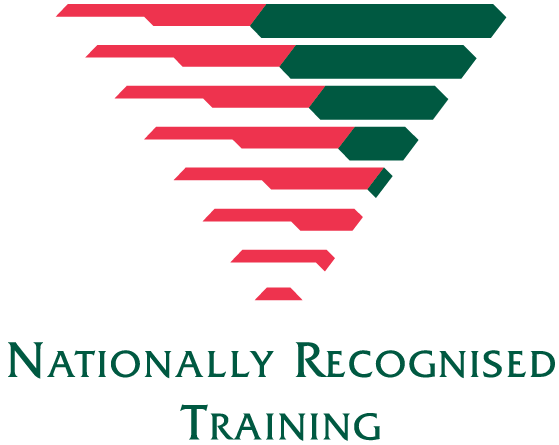Qualification Description
This unit describes the skills and knowledge required to recognise potentially hazardous manual tasks, and then to prepare for and complete those tasks in a safe manner.
This unit applies to all workers involved in manual handling tasks.
The skills in this unit must be applied in accordance with Commonwealth and State/Territory legislation, Australian/New Zealand standards and industry codes of practice.
The Hazardous manual tasks code of practice applies to
this work.
Who is the course suitable for?
This course is ideal for anyone who performs manual tasks in their workplace and wishes to meet industry safety standards while reducing risks of injuries.
Course Duration
- Two days class
- 10 Hours self-paced study – supported self-paced learning is to be undertaken by the student outside of the scheduled hours
Mode of delivery
- Face to face and/or Live Zoom Sessions
- Practical Activities
Training Location
- Victoria: GO2/1510 Pascoe vale Road, Coolaroo Vic 3048
- Dandenong: Suit 4/106 Foster Street, Dandenong Vic 3175
- South Australia: 225 South Rd Mile End SA 5031
Work Placement
Work placement hours are not required.
Course Structure
To be awarded the nationally accredited certificate, students will receive a Statement of Attainment for the unit HLTWHS005 Conduct Manual Tasks Safely.
| Unit Code | Unit Name | Core / Elective |
|---|---|---|
| HLTWHS005 | Conduct Manual Tasks Safely | Core |
What resources are used to deliver the training?
Student Handbook
A comprehensive Student Handbook will be provided to each student. This document includes an overview of the unit, course objectives, key concepts, and safety guidelines for manual handling. It also serves as a reference for the risk assessment process and safe work practices. The handbook includes:
- Key learning points and summary of each module
- Step-by-step guidelines for safe manual handling
- Examples of risk assessments and safe work procedures
- Checklists and templates for practical exercise
Learner Guide
The Learner Guide is a detailed resource that complements the Student Handbook. It contains in-depth explanations of manual handling principles, techniques, and regulatory requirements. This guide supports students in understanding theoretical concepts and provides:
- Detailed instructions on safe manual handling practices and ergonomics
- Case studies and real-life examples of manual handling hazards and risk controls
- Additional reading materials and references to relevant legislation and industry standards
- Exercises to reinforce learning and encourage self-assessment
Presentation Slides
Presentation slides are used by the trainer during the course delivery to visually support key concepts and discussions. These slides summarize the main points from the Learner Guide, helping students follow along and engage with the material. They may include:
- Diagrams and visuals of safe lifting techniques and ergonomic principles
- Charts showing the hierarchy of controls for manual handling risks
- Example scenarios and case studies for group discussion
Practical Equipment & Tools
During the practical sessions, students will use relevant manual handling equipment to demonstrate safe lifting, carrying, and handling techniques. This includes:
- Lifting aids such as trolleys, hoists, and dollies
- Personal protective equipment (PPE) for manual tasks (e.g., gloves, safety shoes, back support belts)
- Realistic workplace scenarios for group exercises and demonstrations
Risk Assessment Templates
Students will be provided with templates for conducting risk assessments. These templates help learners systematically evaluate hazards, assess risks, and develop control measures for safe manual handling. These templates are a critical resource for both individual and group activities.
Assessment Tools
Assessment tools will include:
- Knowledge questionnaires to assess understanding of safety regulations, risk controls, and manual handling techniques
- Practical assessment checklists to evaluate students’ ability to apply safe handling techniques and risk control measures during simulated workplace tasks
- A workplace project template to guide students through conducting a manual handling risk assessment and reporting.
Assessment Arrangements
- Assessments are designed to allow the students to exhibit competencies in the unit(s) of competency.
- Assessment’s methods can include practical tasks, project, written responses, role play, supervisors report, case studies, etc.
- Information about assessment requirements will give out in the first class and explained clearly by the trainer/assessor.
- Students are not graded but deemed “Competent” or “Not Yet Competent”.
- Students can appeal an assessment outcome.
Student Support
AGAE offers a range of support services to meet everyone’s needs. Please contact AGAE directly for assistance with your requirements.
What can I do once I have completed my qualification?
Once you have completed the HLTWHS005 – Conduct Manual Tasks Safely course, you will have the skills and knowledge to:
- Apply Safe Manual Handling Practices:
- Assess risks associated with manual tasks.
- Implement safe handling techniques to minimize injuries.
- Use tools and equipment appropriately to assist in lifting or moving.
Career Pathways
Depending on your long-term career and study goals, completing the HLTWHS005 Conduct Manual Tasks Safely course can open pathways in various sectors where manual handling and workplace safety are crucial. Here are some potential career pathways:
- Aged Care Sector
- Disability Support
- Health Care
- Childcare and Early Education
- Logistics and Warehousing
- Construction and Labor
- Education and Workplace Training
AGAE does NOT guarantee any;
- Licensing outcome
- Employment outcome
- Successful completion of this course
Are there any prerequisites or entry requirements?
There are no entry requirements for this qualification.
The RTO has the following admission requirements:
- Students must be 18 years of age.
- AGAE requires all enrolment and payment details to be completed, includes USI number, prior to attending.
- Basic computer / IT skills.
- All applicants are required to participate in a pre-course interview prior to enrolment to evaluate their eligibility for the course.
- Additionally, applicants must demonstrate that they are physically capable of performing the tasks required to successfully complete this course.
- This program has been designed to be delivered through classroom-based delivery and students must have the ability to attend the scheduled sessions as per the timetable, and must have access to a computer and the internet to complete self study work. Students are to be informed of the timetable on enrolment and must maintain the required student contact hours.
Foundation Skills:
The foundation skills describe those required skills (such as language, literacy, numeracy and employment skills) that are essential to performance.
| Skill | Performance feature |
|---|---|
| Numeracy | To assess and calculate the weight of items being lifted, moved, or carried. This includes basic calculations such as determining the appropriate lifting limits, and understanding load-bearing capacities and ergonomic requirements. |
| Reading | To interpret and follow manual handling guidelines, safety instructions, and risk assessments. This includes understanding labels, safety signs, and relevant workplace policies to ensure tasks are performed safely. |
| Writing | To complete documentation and reports related to manual handling tasks, including risk assessments, incident reports, and safety checklists. |
The requirement to provide a Unique Student identifier (USI)
All students are required to obtain a Unique Identifier (USI) prior to enrolment or provide evidence if exemption from obtaining a USI. A student can obtain a USI by visiting the following website to create a USI number;
If a student has already previously obtained a USI number but does not know it, they can go to the website to obtain their USI:
Student can also sign a USI consent form to allow AGAE to search or create a USI number on their behalf.
AGAE will not issue an AQF qualification if the student fails to adhere to this requirement.
Skill Recognition
Under the Australian Qualification Framework (AQF), AGAE accepts and provides Credit and Recognition of Prior Learning (RPL) to learners for units of competency and/or modules (unless licensing or regulatory requirements prevent this) where these are evidenced by:
- AQF certification documentation issued by any other RTO or AQF authorised issuing organisation, or
- Authenticated VET transcripts issued by the Registrar
Obtaining your certificate or Statement of Attainment after successfully completing your course;
- AGAE will issue a certificate within 30 calendar days of successful completion of the course, provided all requirements are met, fees are fully paid, and the USI (Unique Student Identifier) has been supplied.
- For students who partially complete the course successfully, a Statement of Attainment will be issued, provided all fees are fully paid and the USI has been supplied.
Fees:
The cost for the full course is $130
Cooling off period
Our refund policy is included in the agreement that you are required to sign to indicate acceptance of the offer of enrolment and all the terms and conditions specified. All self-funded course fees include a non-refundable deposit as outlined on the Course Outline and Student Agreement, which must be paid to secure a student’s place in the course.
The deposit is non-refundable except in the instance where AGAE is required to cancel a course due to insufficient numbers or for other unforeseen circumstances.
Students who withdraw from a course and wish to seek a refund or have the amount they owe on their fees reduced must apply to AGAE in writing, outlining the details and reason for their request.
Students who have not completed a withdrawal form are not eligible for consideration of a refund or reduction in fees. Eligibility for a refund will be assessed based on the services provided to the student and the costs incurred by AGAE in order to provide those services to the student. The outcome of the refund assessment will be provided by written notice to the student’s registered address outlining the decision and reasons for the decision along with any applicable refund or adjustment notice.
AGAE adheres to the cooling-off period as specified according to Australian Consumer Law. Further details can be accessed in the AGAE’s Student Handbook which is available on our website: https://www.agaeducation.com.au/
How to Enrol
To enrol in this course, please complete the Enrolment Form available on the website and email it to:
admin@agaeducation.com.au
Or you can call us on:
- South Australia: (08) 7480 3318 / 0451 600 626
- All other states: (03) 8313 3249 / 0451 600 626
We will contact you to discuss your needs prior to finalising your enrolment.
‘Please ensure you read our Student Handbook along with this Course Outline’



